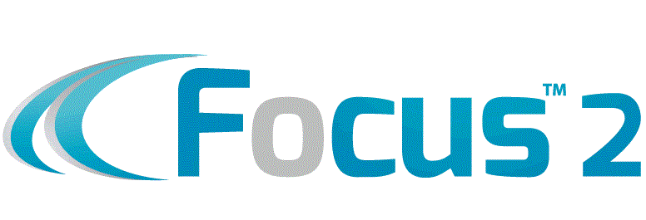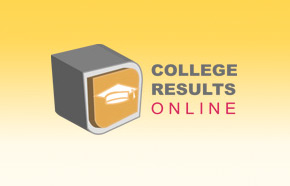Worstest Paying College Degrees
Half of knowing is knowing what you DON’T want to do.
Previously I wrote an article about college graduates who graduated with excessive student loan debt. “Finding yourself” in college is an expensive proposition. Every time a student changes majors, it pushes out the graduation timeline. An extra year or an extra two years in college is expensive and even more expensive if it is leveraged through loans.
If your child is unsure of what kind of career they want to pursue, knowing the expected income range for that field might help in their decision making process.
Even if it’s just to eliminate a few careers.
With AZCollegePlanning, we help parents and students estimate the 4 year cost of college and estimate how much student loan debt the graduate will carry (my goal is zero or as close to zero as possible) so that the career field your student is entering will provide the lifestyle they desire.
Worst-Paying College Degrees
We all know money doesn't buy happiness--and that's good news for these new grads. (From Yahoo Hotjobs)
There's no denying the value of a college education: According to recent U.S. Census surveys, the median salary for college grads is more than $20,000 higher than that of people with only a high school diploma. And the unemployment rate for people with bachelor's degrees is almost half the rate for people without.
But some degrees are worth more than others, as PayScale.com shows in its 2010 report on the earning power of bachelor's degrees.
No surprise, engineering degrees continue to be top earners--and (also no big shocker) you have to go pretty far down the list before you see the liberal arts well represented.
But there's more to choosing a major than comparing dollar amounts. We salute and congratulate the graduates whose interests (and hard work) have led them to the following degrees--the lowest-earning degrees on PayScale's list.
10. Drama (starting annual salary: $35,600; mid-career annual salary: $56,600) Some mega-millionaire movie stars with drama degrees (Denzel Washington and Meryl Streep, for instance) may be skewing these numbers upward--for every Denzel and Meryl, there are thousands of thespians struggling to make ends meet. But you don't study drama because you want to get rich--you study drama because you love the theater. (And an ability to act comes in handy in many professions.)
9. Fine arts (starting annual salary: $35,800; mid-career annual salary: $56,300) Well, it takes an artist to make a thrift-store wardrobe look like a million bucks.
8. Hospitality and tourism (starting annual salary: $37,000; mid-career annual salary: $54,300) Jobs that include tips may be skewing these numbers downward--and this is an industry that looks to be on the rebound as the economy improves. Plus, the perks associated with jobs in hospitality and tourism may compensate for the comparatively low salaries--many jobs in the industry allow extensive travel (or provide considerable travel discounts).
7. Education (starting annual salary: $36,200; mid-career annual salary: $54,100) For the right people, teaching is an immensely rewarding career--and it's truly a noble one. The good news is, according to the U.S. Bureau of Labor Statistics (BLS), the employment opportunities for primary, secondary, and special education teachers are expected to grow by 14 percent in the coming decade. And there will be plenty of new opportunities in continuing education for adults, as professional skill requirements change ever more rapidly.
6. Horticulture (starting annual salary: $37,200; mid-career annual salary: $53,400) It seems that a green thumb doesn't necessarily bring in the greenbacks. But when you work among flowers and plants in a nursery or garden, who needs 'em?
5. Spanish (starting annual salary: $35,600; mid-career annual salary: $52,600) As an old proverb puts it, when you learn a new language, you "gain a new soul." Who could put a price on that? And certainly, knowing Spanish--the language with the second-highest number of native speakers (after Mandarin)--in addition to English opens up a world of job opportunities beyond Spanish teacher or translator (as a plus, you can better enjoy a world of fantastic Spanish-language music, movies, and literature).
4. Music (starting annual salary: $34,000; mid-career annual salary: $52,000) Hey, if being a musician were easy, everyone would do it. Some of us are guitar heroes; most of us just play the video game.
3. Theology (starting annual salary: $34,800; mid-career annual salary: $51,500) This is the perfect example of a degree earned by someone who's "not in it for the money": people who choose to study theology often feel they're pursuing a higher calling (and often feel a strong desire to do good in the world, no matter the cost).
2. Elementary education (starting annual salary: $33,000; mid-career annual salary: $42,400) Specializing in elementary education means a lower median salary than an education degree (number 7).
1. Social work (starting annual salary: $33,400; mid-career annual salary: $41,600) They say that crime doesn't pay. As this list seems to point out, neither does helping people. So it's a good thing that many college students seem to believe that helping others is its own reward--social workers are an indispensable safety net for people who've fallen on difficult times. And the BLS reports that the outlook for opportunities in this field are favorable--particularly for social workers who work in rural areas or with senior citizens.
(Source: PayScale salary survey. Methodology: Annual pay is for bachelor's graduates without higher degrees. Typical starting salaries are for graduates with two years of experience; mid-career salaries are for graduates with 15 years of experience. PayScale also provides salary information by college; for more information, check out PayScale's Best Colleges Report.)
http://hotjobs.yahoo.com/career-articles-1263
Does this mean you should not go into these careers? Absolutely not. You can be successful and happy in any career. It means that you must do your due diligence and graduate with the least amount of debt and earn your degree in the shortest amount of time.








